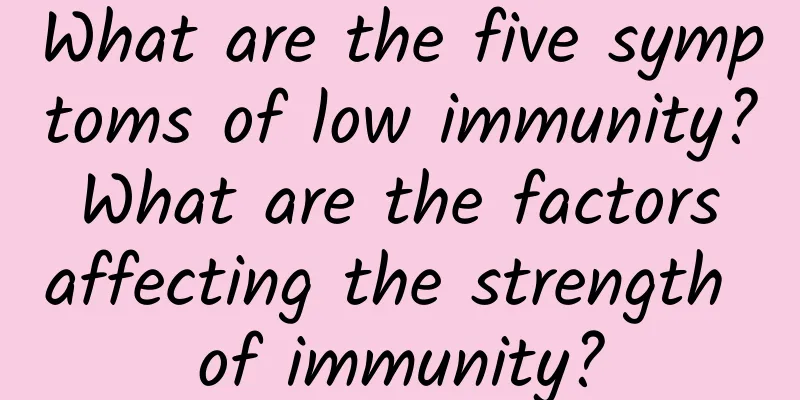Human body structure diagram HD female

|
The basic structure of human anatomy is the body cell, and there is a non-cellular structure in the middle of the body cell, which is called the intercellular matrix. The cell structure can be divided into three parts: cytoplasm, nucleus and cytoplasm. Epithelial cell tissue is divided into three categories: covering epithelial cells, glandular epithelium, and sensory epithelial cells. It can be divided into three parts: cytoplasm, nucleus and cytoplasm. The cytoplasm is mainly composed of proteins, long-chain fatty acids and glycogen, which has the function of protecting cells, maintaining the stability of the interior of cells, and controlling the exchange of substances inside and outside cells. Let's take a look at the diagram of the body structure. The head consists of two parts: the skull and the face. The brain includes brain tissue structures, the face has visual organs such as eyes, ears, nose, tongue, and the starting and ending points of the digestive tract - the mouth, and also encloses the facial muscles. The head bones are divided into the skull and the face. Part of the skull includes: frontal bone (1 piece), parietal bone (cranium, 2 pieces), occipital bone (1 piece), temporal bone (2 pieces), sphenoid bone (two pieces exposed to the outside world, specifically a connected bone); part of the face includes nasal bone (2 pieces), sphenoid bone (2 pieces), maxilla (2 pieces), and mandible (1 piece). Facial muscles play a particularly important role in facial expressions, including the frontalis, procerus, corrugator, temporalis, extraocular muscles, nasal muscles, zygomatic muscles, quadratus lip superioris, orbicularis oris, quadratus lip, deltoid mentum, mentalis, masticatory muscles, buccinator muscles, ribbing muscles, and external auditory canal muscles. Facial features: eyes (including eye sockets, upper eyelids, and eyes), lips (mouth, front teeth, and mouth), eyebrows, nose (nose bridge, nose root, and nose tip), ears (auricle, anti-auricle, auricle, anti-auricle, earlobe, cartilage, etc.) The human brain is the material condition of the central nervous system activity. It is composed of two cerebral hemispheres, the left and right cerebral hemispheres. The brain includes the telencephalon (the human brain), diencephalon, thalamus, and brainstem (cerebral cortex, pons and medulla oblongata). There are many nerve nuclei or central nervous systems concentrated by neurons, and there are many ascending and descending sympathetic nerve bundles that connect the human brain, thalamus and spinal nerves. The human body's internal organs include the heart, liver, gallbladder, spleen, stomach, lungs, kidneys, intestines, colon, pancreas, bladder, appendix, uterus, uterus and ovaries, etc. Heart The human heart is located in the lower left corner of the middle of the chest cavity and is composed of four chambers: the left atrium, left atrium, right atrium, and right ventricle. The function is to promote blood flow, provide sufficient blood volume to the organs and tissues of the human body and bring the end products of metabolism, so that cells can maintain normal metabolism and function. Most of the liver is located in the right hypochondrium and epigastrium, and a small part is located in the left hypochondrium. The liver is light brown, soft and brittle, wedge-shaped, with a rounded and blunt right end and a flat and thin left end. It can be divided into upper and lower sides, front and back, left and right edges, and left and right lobes. The main function is metabolism, and it plays an important role in the human body in deoxidation, storage of glycogen, production of metabolic proteins and so on. The lungs are located in the chest cavity, with the upper and lower lungs covering the heart. The lungs are divided into five lobes, two on the left and three on the right, which are composed of the various bronchitis, bronchi, blood vessels and lymphatic vessels in the lungs. The lungs are the human body's respiratory organs and also the body's key hematopoietic organs. Normal renal function Adults have two kidneys, located behind the waist on both sides. The kidney is part of the genitourinary system and is responsible for filtering impurities in the blood, maintaining the balance of blood and electrolyte solutions, and ultimately producing urine that is excreted from the body through the urethra. It also has an endocrine function to regulate blood pressure. The gallbladder is sac-shaped and located in the right upper abdomen, on the outer edge of the liver. It is adhered to the gallbladder fossa of the liver and communicates with the gallbladder through the cystic duct. The gallbladder is divided into four parts: fundus, body, neck and tube. Its main function is to store and metabolize bile and participate in the digestion of food. The stomach is an expanded part of the esophagus, located below the diaphragm, connected to the esophagus above and the colon below. The stomach can be divided into several parts: atresia, fundus, body, antrum and cardia. The stomach has the functions of storing food, digesting and absorbing food, and preventing the invasion of microorganisms and foreign matter. The spleen is located in the upper left corner of the abdomen. It is flat and oval in shape, dark red, soft and brittle, and consists of a capsule, posterior capsule and lymph node tissue. The spleen is a key lymphoid organ that has functions such as hematopoiesis, blood filtration, elimination of degenerated red blood cells and participation in immune response. |
<<: How to remove blood stasis during menstruation
>>: Female vagina structure diagram
Recommend
What are the symptoms of kidney deficiency in women?
Women are very prone to some diseases. When treat...
What to do if your blood sugar is too high
Glucose tolerance blood sugar will be high, mainl...
How to treat Bartholin's gland cyst? Diet therapy is effective
Bartholin's gland cysts can vary in size, and...
What should I do if my menstrual flow is light?
The appearance of menstruation is a good sign for...
What are the best colors for living room floor tiles? What are the considerations for the colors of living room floor tiles?
We all know that the decoration of the living roo...
Supplements suitable for women to take for a long time
In modern society, women hold up half the sky. Ma...
What to do if a breastfeeding mother has stomach pain
During the breastfeeding period, if a new mother ...
Can female endocrine disorders cause insomnia? What are the dangers?
Endocrine disorders are very common in clinical p...
I'm 4 months pregnant and my stomach is always hurting
For pregnant women, the most feared thing is that...
What to do if your stratum corneum is thin and your skin is dry? Six ways to improve your stratum corneum
Many people think that thin stratum corneum is dif...
Treatment of adhesion and elevation of fallopian tube fimbria
The incidence of adhesion and lift of the fallopi...
What are the techniques for postpartum breast massage?
Women need to breastfeed after giving birth, but ...
What color and shape is eggplant? What is its surface? How to cook fish-flavored eggplant?
Eggplant belongs to the Solanaceae family and the...
I haven't had my period and I can't get pregnant.
Delayed menstruation has happened to many female ...
An inconspicuous habit when cooking will increase blood sugar and make you gain weight. Change it now!
Do you like to add a handful of sugar when cookin...









